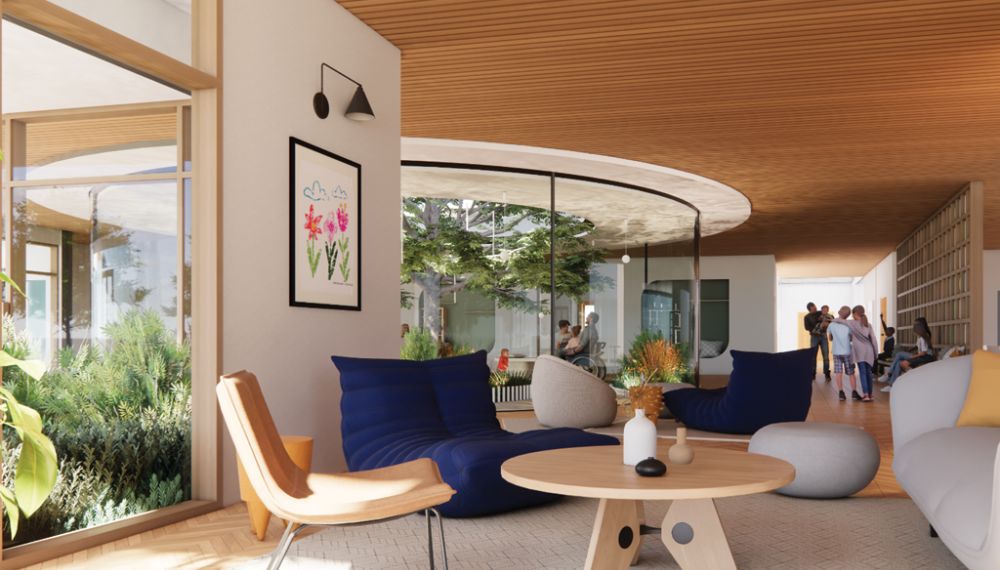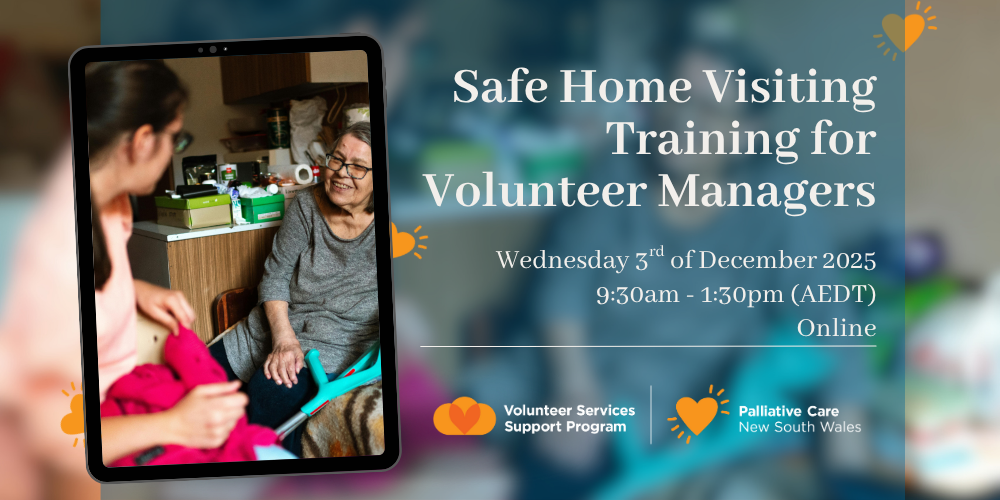
Designing for Dignity: How Architectural and Emotional Design Shape Palliative Care Experiences
- by Maria Lopez
- May 13, 2025
Palliative care is about more than managing symptoms. It is about providing holistic care to patients with a life-limiting illness and supporting their families and carers, ideally in a location of their choice. While many people wish to receive care at home and also die at home, this is not always possible for a range of reasons. High quality home-like palliative care facilities are essential to meet the needs of those no longer able to stay at home, but who do not wish to be, or need to be in an acute hospital setting. Increasingly, research highlights that the design of spaces where people spend time as they receive palliative or end-of-life care can have a powerful influence on emotional and spiritual wellbeing, comfort, and agency. And there is growing recognition that both architectural and emotional elements are integral to the design of these spaces.
Designing for Comfort, Connection, and Dignity
Designing for palliative care means creating environments that foster emotional safety, privacy, connection, and normalcy. Features such as natural light, access to fresh air and gardens, private rooms with ensuites, communal kitchens, and quiet, flexible spaces all contribute to environments where people feel supported and respected.
Research into the built environment and palliative care experience has found that it is not simply materials, colours, or furniture that create comfort, but the ability to continue familiar and meaningful rituals. Whether it be preparing a meal, sitting in a garden, playing games, or sharing private conversations, thoughtful design enables these acts of daily living to help people feel connected and human as they, or their loved one, near the end of life.
Design principles like those described above are likely to inform new and upgraded palliative care facilities across rural and regional New South Wales. Under the $93 million World Class End of Life Care Program, five major sites (Nepean, Westmead, Orange, Tamworth, and Wyong) are currently in planning or early works. At Tamworth Hospital, for example, plans to expand the Nioka Palliative Care Unit will see its capacity double from six to twelve beds, with private rooms, outdoor spaces, and communal areas designed to reflect the holistic needs of patients and families.
Recognition of the critical role design plays in quality person-centred and family-centred care was also celebrated at the 2024 Palliative Care NSW State Conference, where the poster “Designing for Dignity” by Karen Height and Connie Matthews was awarded Best Poster. Their work showcased practical strategies for embedding architectural and emotional design into palliative care settings, enhancing experiences for patients, families, loved ones, healthcare teams, and volunteers.
Height and Matthews highlight that palliative care has a unique philosophy of care, differing from standard inpatient care in many ways, including longer lengths of stay, a greater presence of family and loved ones, and more frequent end-of-life events and difficult conversations. They argue that the environment in which palliative care is delivered can either support or detract from the physical, spiritual, social, and psychological needs of patients and families, as well as from staff wellbeing. It is therefore imperative to design spaces that enable and support the delivery of optimal palliative care.
The importance of age-appropriate, emotionally sensitive design is also gaining formal recognition in paediatric palliative care. Research from the University of Melbourne’s Faculty of Architecture, Building and Planning, in collaboration with clinicians and children’s hospitals, has helped shape national guidelines for paediatric hospital design.
Their project, “Designing for Wellbeing in Children’s Hospitals”, highlighted how physical environments, through access to outdoor space, flexible family areas, sensory features, and child-centred design, can support children’s emotional, psychological, and developmental needs when receiving palliative or end-of-life care.
This research aligns with the NSW Government’s current investment priorities in paediatric palliative care. In April 2025, as part of a broader $80 million commitment over four years (2023–24 to 2026–27), the Minns Labor Government announced an additional $2.8 million in funding to enhance respite and end-of-life care for children across the state. The funding will support 12 local health districts to create home-like and multifunctional spaces for a range of services including paediatric palliative care. These upgrades include cosmetic refurbishments, specialised equipment, and comfort items to help transform clinical settings into warm, family-friendly spaces. The initiative also funds education and training opportunities to support the delivery of holistic, compassionate paediatric palliative care.
Building on this, the Government announced in early May the design and planning of Mounties Cottage, a new paediatric hospice to be built in Western Sydney. Only the second facility of its kind in the state, this facility reflects a growing commitment to creating spaces that offer holistic, emotionally attuned support for children and their families navigating life-limiting conditions.
Creating Spaces That Affirm Life
Both research and lived experience affirm that environment matters profoundly for people receiving palliative or end-of-life care and their families. It shapes how individuals live their final days, how families stay connected, how healthcare teams and volunteers provide support, and how communities honour a person. Thoughtful, compassionate environments are essential to delivering holistic person- and family-centred care. They offer more than comfort, they create spaces for connection, agency, and meaning.
As demand for palliative care, dedicated units, and improved facilities in NSW increases, it is vital that we get the design right to ensure a positive experience not only for patients, but also for families, loved ones, healthcare professionals, and volunteers. Good design underpins quality palliative and end-of-life care. Its importance should not be underestimated.
Further Information
For further insights, Dr Rebecca McLaughlan’s conversation on ABC Radio, “The role architecture plays in good palliative care,” offers valuable perspectives on how the built environment shapes the emotional experiences of families and loved ones as they occupy hospital spaces while receiving palliative care.
Written by Sarah Whiteley
Upcoming Events
- NOVEMBER 11, 2025
- 10:30 AM - 11:30 AM
Facts and fictions about wellbeing and volunteering
Wellbeing is a deeply personal experience, shaped by each individual’...
Read more- DECEMBER 2, 2025
- 10:00 AM - 12:00 PM
NSW Network of Managers of Palliative Care Volunteers – December meeting & Christmas lunch
The role of the Network is to ensure best practice for managers of palliati...
Read more- DECEMBER 3, 2025
- 9:30 AM - 1:30 PM
Safe Home Visiting – Training for Palliative Care Volunteer Managers
Safe Home Visiting will assist you to make your home visits productive and ...
Read moreBecome a member of Palliative Care NSW
Palliative Care New South Wales is the peak body in NSW representing palliative care providers and those with an interest in palliative care. Palliative Care New South Wales is a member of the national peak body Palliative Care Australia.
Join today and receive discounts, benefits and more!
Special member rate available for volunteers.
Subscribe to our eNews
Be the first to know our latest new, events, and research!
SUBSCRIBE TO ENEWS





